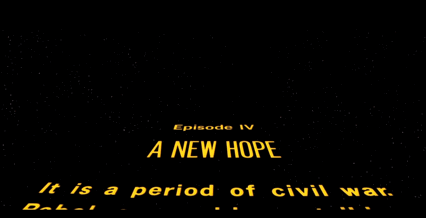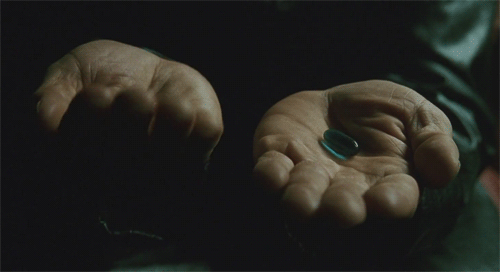So far in this blog series, we’ve discussed the importance of data storytelling and covered how to use the STAR model to share your achievements as you might during a job interview. Now, we’ll explore how to draw from Hollywood’s version of storytelling—using the Hero’s Journey framework (departure, initiation, return)—to create an engrossing, transformative story.
You already know data holds invaluable information that can help you prove the impact of your L&D programs, gain stakeholder buy-in for learning analytics, and earn your seat at the table, just to name a few.
So, when it’s time to share your insights, you need to hold people’s attention by entertaining them with a great story—not a boring 20-page report with confusing charts and spreadsheets. After all, when something is easy to understand and digest, chances are you’ll get exactly what you want.
Departure: Help me, Obi-Wan Kenobi, you’re my only hope!
Get started by setting your story’s departure (or situation)—which can be broken into two key elements from the Hero’s Journey archetype:
- Identify the ordinary
- Call to adventure
Identifying the ordinary world is the most literal interpretation of setting the situation. In other words, when and where is this scenario taking place? Really, this is about setting the environment through which the rest of the story will take place.
For instance, consider the opening credits to any of the Star Wars films. You immediately see all the details about the setting: time, place, and context. In terms of data storytelling, you want to explain the situation, plot, or dilemma prior to having all that wonderful data in hand.

From here, things get shaken up by the call to adventure, part of which is identifying the vehicle or person through which you will tell the story. By framing your story within an appropriate environment and establishing a point of view, you’re better able to capture your audience’s attention and have created the foundation for the rest of the story.
Princess Leia’s now-famous plea to Obi-Wan Kenobi, for example, was the call to adventure that set off a series of events that led to Luke Skywalker’s mission to find Obi-Wan.

A call to adventure can take many different forms. For instance, you may have the realization that your industry is experiencing significant transformation and, as a result, so is your business strategy.
A Real-World Call to Adventure
As Visa began a massive digital transformation, see how their learning and development team begin their journey to understand how this change would impact their programs across the organization.
Initiation: Red Pill or Blue Pill?
This section goes by different names, so we’ll summarize it here as “Tests, Allies, and Enemies.” If the call to adventure sets the story in motion, this is where the meat of the conflict resides.
Neo begins his journey into the Matrix with his first test. By choosing the red pill, he acknowledges that he’s committed to this quest and to freeing his mind. It’s at this point he awakens from his slumber to see the Matrix for what it really is, and his journey begins in earnest.

Just like Neo or any other fictional hero must pass a series of trials and tribulations, you likely encountered challenges and roadblocks en route to discovering the revelation you want to share with your peers. Remember, going into detail here adds credibility to your story and process. Don’t shy away from describing what went wrong; instead, use challenges as opportunities to showcase how they were overcome.
LISTEN NOW: The podcast “You Are Not So Smart” gives great examples of narrative persuasion—specifically doing so in the public health sphere in the episode “The power of fiction to change people’s minds."
Return: Mount Doom
Now, it’s time to conclude your story and describe the outcomes of your project. Keeping with the Hero’s Journey, the last part of your story ends with these stages:
- Reward: the knowledge and experience that leads to better understanding and reconciliation
- Road Back: when you find that old ways are no longer effective and set new goals based on what you’ve learned
- Resurrection: the tipping or turning point
- Elixir: the final insights and lessons learned along the way
A great example is from J.R.R. Tolkien's classic “Lord of the Rings” series. When Frodo must destroy the One Ring in “The Return of the King,” nearly everything goes wrong because he’s succumbed to the ring’s power. Although Gollum and the One Ring are finally destroyed, that’s not the end of Frodo’s journey.
The ring’s destruction is just the tipping point leading to the defeat of Sauron. After his rescue, Frodo retires to the Shire for a time. He’s learned important lessons from passing many trials and documents them in a manuscript before sailing off with the elves.

This, too, is where you “return with the elixir” from your L&D journey. It’s time to document how you’ve surpassed and grown from this experience and summarize the lessons you’ve learned along the way. Use the last stages of the Hero’s Journey to help you describe the outcomes of a project.
For instance, what’s the biggest or most impactful challenge you faced as a result of all your hard work? By overcoming that difficulty, what new L&D insights have you learned and how will they affect future learning programs?
What's next? That depends on the desired outcome of your data storytelling.
Now that you have a recipe for building a story based on the Hero’s Journey method, try exploring other storytelling tropes to create compelling data-driven narratives. Then, join us for our next post, when we explain the importance of understanding different audiences.
NOTE: Star Wars, The Matrix, and The Lord of the Rings are used here only to illustrate the examples in this blog post. Watershed is not associated with, sponsored by, or affiliated with Lucasfilm Ltd. Production; Twentieth Century Fox; Warner Brothers; or New Line Cinema.
About the author
Tim Dickinson is skilled in leading organizations through strategic changes, getting positive results through learning analytics, and translating complex ideas and trends into easy-to-understand explanations.
Subscribe to our blog
